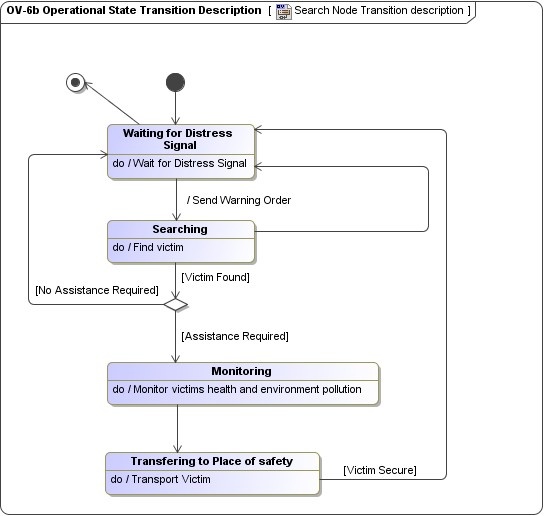Description
The Operational State Transition Description is a graphical method of describing how an operational node or activity responds to various events by changing its state. The diagram represents the sets of events to which the architecture will respond (by taking an action to move to a new state) as a function of its current state. Each transition specifies an event and an action. The explicit sequencing of activities in response to external and internal events is not fully expressed in an OV-5. An OV-6b can be used to describe the explicit sequencing of the operational activities.
Alternatively, an OV-6b can be used to reflect the explicit sequencing of actions internal to a single operational activity or the sequencing of operational activities with respect to a specific operational node. In a net-centric architecture, the OV-6b is used to describe the set of state transitions for providers and consumers in the NetCentric Environment (NCE) in response to the posting of information to the NCE or retrieving of information from the NCE.
Implementation
OV-6b can be represented using a UML State Machine diagram.
Sample

OV-6b Operational State Transition Description
Related views
An OV-6b can be used to describe the detailed sequencing of activities or work flow in the business process. The OV-6b is particularly useful for describing critical sequencing of behaviors and timing of operational activities that cannot be adequately described in the Activity Model (OV-5).
- Operational State Description
- Operational State
- Node